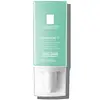What's inside
What's inside
 Key Ingredients
Key Ingredients

 Benefits
Benefits

 Concerns
Concerns

 Ingredients Side-by-side
Ingredients Side-by-side

Water
Skin ConditioningGlycerin
HumectantDimethicone
EmollientIsopropyl Isostearate
EmollientDipropylene Glycol
HumectantSqualane
EmollientPEG/PPG-18/18 Dimethicone
EmulsifyingSilica
AbrasiveTocopheryl Acetate
AntioxidantSodium Hyaluronate
HumectantOlea Europaea Fruit Extract
BleachingCentella Asiatica Extract
CleansingAloe Barbadensis Leaf Water
MaskingPalmitoyl Hexapeptide-12
Skin ConditioningTriticum Vulgare Bran Extract
Skin ConditioningCaffeine
Skin ConditioningMethyl Trimethicone
Skin ConditioningSorbitol
HumectantSodium Polyaspartate
HumectantPetrolatum
EmollientTrehalose
HumectantLactis Proteinum
Skin ConditioningLinoleic Acid
CleansingPyridoxine Dipalmitate
Skin ConditioningButylene Glycol
HumectantCholesterol
EmollientSucrose
HumectantPolysilicone-11
Glyceryl Polymethacrylate
PEG-150
HumectantPEG-8
HumectantHydroxyethyl Urea
HumectantHydroxyacetophenone
AntioxidantBHT
AntioxidantDisodium EDTA
Sodium Hexametaphosphate
MaskingSodium Benzoate
MaskingPotassium Sorbate
PreservativePhenoxyethanol
PreservativeWater, Glycerin, Dimethicone, Isopropyl Isostearate, Dipropylene Glycol, Squalane, PEG/PPG-18/18 Dimethicone, Silica, Tocopheryl Acetate, Sodium Hyaluronate, Olea Europaea Fruit Extract, Centella Asiatica Extract, Aloe Barbadensis Leaf Water, Palmitoyl Hexapeptide-12, Triticum Vulgare Bran Extract, Caffeine, Methyl Trimethicone, Sorbitol, Sodium Polyaspartate, Petrolatum, Trehalose, Lactis Proteinum, Linoleic Acid, Pyridoxine Dipalmitate, Butylene Glycol, Cholesterol, Sucrose, Polysilicone-11, Glyceryl Polymethacrylate, PEG-150, PEG-8, Hydroxyethyl Urea, Hydroxyacetophenone, BHT, Disodium EDTA, Sodium Hexametaphosphate, Sodium Benzoate, Potassium Sorbate, Phenoxyethanol
Water
Skin ConditioningGlycerin
HumectantIsopropyl Palmitate
EmollientButyrospermum Parkii Butter
Skin ConditioningLauroyl Lysine
Skin ConditioningCetyl Alcohol
EmollientUrea
BufferingPEG-100 Stearate
Glyceryl Stearate
EmollientCera Alba
EmollientPentylene Glycol
Skin ConditioningStearic Acid
CleansingCarbomer
Emulsion StabilisingGlyceryl Acrylate/Acrylic Acid Copolymer
HumectantSodium Hyaluronate
HumectantSodium Hydroxide
BufferingMyristic Acid
CleansingPalmitic Acid
EmollientHydrolyzed Hyaluronic Acid
HumectantCaprylyl Glycol
EmollientCitric Acid
BufferingTrisodium Ethylenediamine Disuccinate
Xanthan Gum
EmulsifyingPolysorbate 60
EmulsifyingPentaerythrityl Tetra-Di-T-Butyl Hydroxyhydrocinnamate
AntioxidantChlorphenesin
AntimicrobialParfum
MaskingWater, Glycerin, Isopropyl Palmitate, Butyrospermum Parkii Butter, Lauroyl Lysine, Cetyl Alcohol, Urea, PEG-100 Stearate, Glyceryl Stearate, Cera Alba, Pentylene Glycol, Stearic Acid, Carbomer, Glyceryl Acrylate/Acrylic Acid Copolymer, Sodium Hyaluronate, Sodium Hydroxide, Myristic Acid, Palmitic Acid, Hydrolyzed Hyaluronic Acid, Caprylyl Glycol, Citric Acid, Trisodium Ethylenediamine Disuccinate, Xanthan Gum, Polysorbate 60, Pentaerythrityl Tetra-Di-T-Butyl Hydroxyhydrocinnamate, Chlorphenesin, Parfum
 Reviews
Reviews

Ingredients Explained
These ingredients are found in both products.
Ingredients higher up in an ingredient list are typically present in a larger amount.
Glycerin is already naturally found in your skin. It helps moisturize and protect your skin.
A study from 2016 found glycerin to be more effective as a humectant than AHAs and hyaluronic acid.
As a humectant, it helps the skin stay hydrated by pulling moisture to your skin. The low molecular weight of glycerin allows it to pull moisture into the deeper layers of your skin.
Hydrated skin improves your skin barrier; Your skin barrier helps protect against irritants and bacteria.
Glycerin has also been found to have antimicrobial and antiviral properties. Due to these properties, glycerin is often used in wound and burn treatments.
In cosmetics, glycerin is usually derived from plants such as soybean or palm. However, it can also be sourced from animals, such as tallow or animal fat.
This ingredient is organic, colorless, odorless, and non-toxic.
Glycerin is the name for this ingredient in American English. British English uses Glycerol/Glycerine.
Learn more about GlycerinSodium Hyaluronate is hyaluronic acid's salt form. It is commonly derived from the sodium salt of hyaluronic acid.
Like hyaluronic acid, it is great at holding water and acts as a humectant. This makes it a great skin hydrating ingredient.
Sodium Hyaluronate is naturally occurring in our bodies and is mostly found in eye fluid and joints.
These are some other common types of Hyaluronic Acid:
Learn more about Sodium HyaluronateWater. It's the most common cosmetic ingredient of all. You'll usually see it at the top of ingredient lists, meaning that it makes up the largest part of the product.
So why is it so popular? Water most often acts as a solvent - this means that it helps dissolve other ingredients into the formulation.
You'll also recognize water as that liquid we all need to stay alive. If you see this, drink a glass of water. Stay hydrated!
Learn more about Water